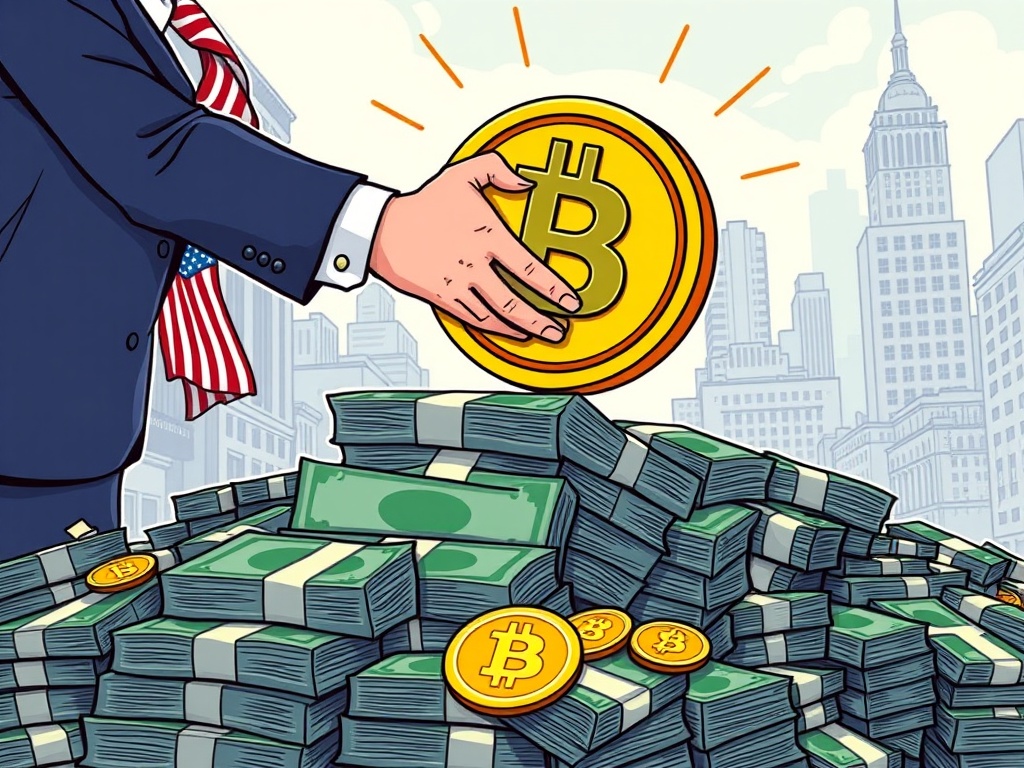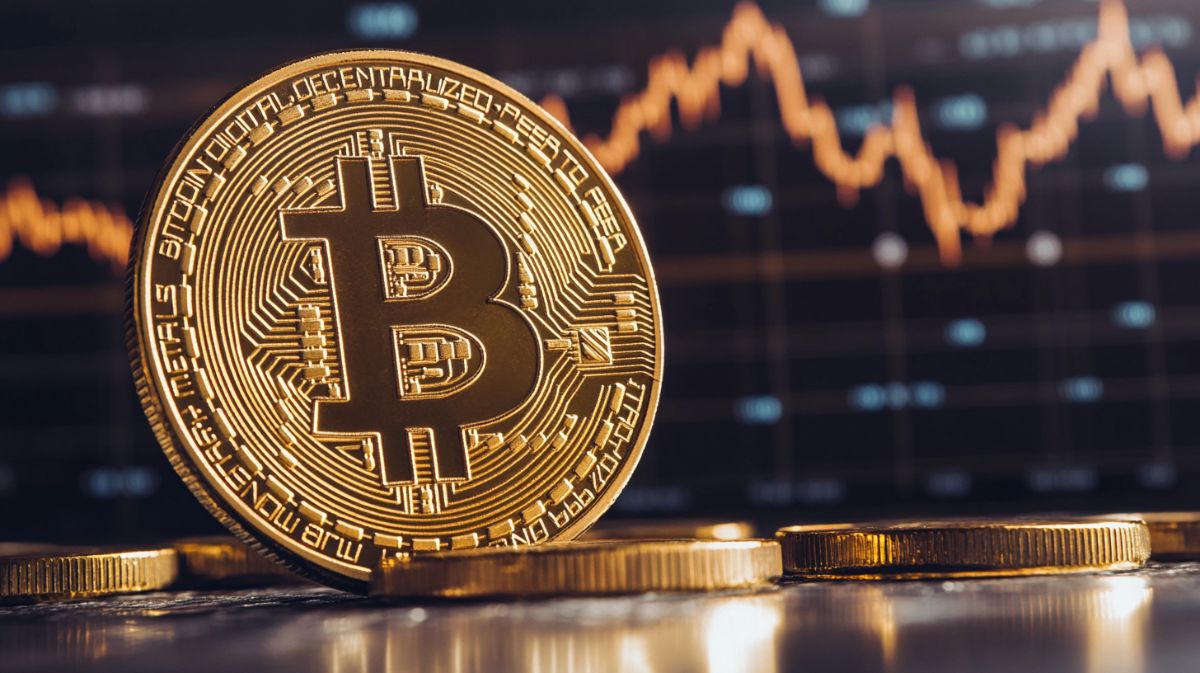Stablecoin Treasury Buyers: Unlocking a Pivotal Shift in U.S. Finance
BitcoinWorld
Stablecoin Treasury Buyers: Unlocking a Pivotal Shift in U.S. Finance
Imagine a world where digital currencies are not just speculative assets but foundational pillars of national finance. That future is rapidly becoming a reality, as the U.S. Treasury now sees stablecoin treasury buyers as a significant new source of demand for government debt. This isn’t just a ripple; it’s a wave signaling deeper crypto integration into the very core of the U.S. financial system.
Why Are Stablecoin Treasury Buyers Suddenly So Important?
U.S. Treasury Secretary Scott Bessent has actively engaged with major stablecoin issuers. Companies like Tether and Circle participated in these crucial discussions. The goal? To gather input on plans to expand short-term Treasury bill issuance in the coming quarters. This direct engagement highlights a crucial shift in perspective.
Historically, stablecoins primarily served as a bridge between fiat and cryptocurrencies. However, their vast reserves, often backed by U.S. dollar-denominated assets, make them natural candidates for holding government debt. This formal recognition by the Treasury marks a pivotal moment for digital assets and their role in mainstream finance.
What Benefits Do Stablecoins Bring to the Treasury Market?
The Treasury’s outreach to stablecoin treasury buyers is a strategic move with clear advantages for both sides. For the U.S. government, it opens up a robust, new channel for funding its operations. This diversification of the investor base can enhance liquidity and stability in the Treasury market, especially during times of high demand for government debt.
Consider these key benefits for the Treasury:
- Diversified Demand: Stablecoins offer a fresh pool of capital, reducing reliance on traditional institutional investors.
- Increased Liquidity: A broader buyer base can lead to more active trading and better price discovery for Treasury bills.
- Innovation & Efficiency: Integrating crypto players could pave the way for more efficient digital settlement systems for government securities in the long term.
This engagement also provides significant benefits for the stablecoin ecosystem itself. Holding U.S. Treasuries as reserves offers unparalleled safety and liquidity, reinforcing the stability and trustworthiness of stablecoins. This strengthens their peg to the dollar and boosts confidence among users.
How Does This Impact the Future of Crypto and Finance?
The White House’s latest step to integrate crypto more deeply into the U.S. financial system is not merely about funding. It signifies a growing acceptance and understanding of digital assets at the highest levels of government. This could lead to more tailored regulatory frameworks and a clearer path for crypto innovation within a regulated environment.
However, this integration also presents challenges:
- Regulatory Clarity: While engagement is positive, clear and comprehensive regulations are still needed to define the roles and responsibilities of stablecoin treasury buyers.
- Systemic Risk: As stablecoins become more intertwined with traditional finance, managing potential systemic risks associated with large-scale crypto adoption becomes crucial.
- Operational Integration: Seamlessly connecting crypto infrastructure with existing financial systems requires significant technological and procedural development and robust security measures.
This development suggests a future where digital assets are not just an alternative, but an integral component of the global financial landscape. It encourages traditional finance to embrace technological advancements, while pushing the crypto sector towards greater transparency and compliance.
The engagement between the U.S. Treasury and major stablecoin issuers marks a profound shift. It underscores the emerging role of stablecoin treasury buyers as significant players in global finance. This move not only provides a new source of demand for U.S. government debt but also solidifies crypto’s path towards mainstream financial integration. It’s a compelling testament to the evolving dynamics of money and markets, promising exciting developments ahead.
Frequently Asked Questions (FAQs)
Q1: What are stablecoins and why are they interested in U.S. Treasuries?
A1: Stablecoins are cryptocurrencies designed to maintain a stable value, often pegged to fiat currencies like the U.S. dollar. They are interested in U.S. Treasuries because these are considered highly safe and liquid assets, ideal for backing their stablecoin reserves and ensuring price stability.
Q2: Who is U.S. Treasury Secretary Scott Bessent?
A2: Scott Bessent is the U.S. Treasury Secretary. He has been actively engaging with major stablecoin issuers to explore their role in the Treasury market, highlighting the government’s interest in integrating digital assets.
Q3: How does this move benefit the U.S. financial system?
A3: This move benefits the U.S. financial system by diversifying the investor base for government debt, potentially increasing liquidity in the Treasury market, and signaling a broader acceptance and integration of digital assets into traditional finance.
Q4: What are the potential challenges of stablecoin integration into the Treasury market?
A4: Potential challenges include the need for clearer regulatory frameworks, managing potential systemic risks as stablecoins become more intertwined with traditional finance, and ensuring seamless operational integration between crypto and existing financial infrastructures.
Q5: Will this make stablecoins more secure?
A5: Yes, holding U.S. Treasuries as reserves significantly enhances the security and stability of stablecoins. This backing provides a strong, low-risk foundation, which can increase user trust and confidence in the stablecoin’s ability to maintain its peg.
Q6: What does this mean for the average crypto investor?
A6: For the average crypto investor, this signifies growing legitimacy and institutional acceptance of the crypto space. It may lead to more stable and regulated crypto products, potentially opening up new investment avenues and reducing volatility in certain segments of the market.
Did you find this article insightful? Share it with your network and spark a conversation about the exciting future of finance!
To learn more about the latest crypto market trends, explore our article on key developments shaping institutional adoption.
This post Stablecoin Treasury Buyers: Unlocking a Pivotal Shift in U.S. Finance first appeared on BitcoinWorld and is written by Editorial Team
Vous aimerez peut-être aussi

Russian Crypto Mining Chief: Bitcoin Could Hit $130k Before Summer Is Out

Ozak AI Presale Surpasses $2M as Investors Eye 560x ROI From $0.005 to $2.80 Price Path
